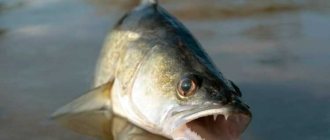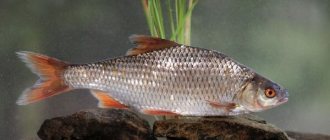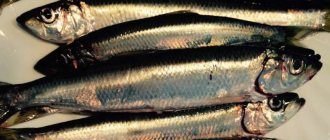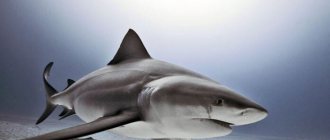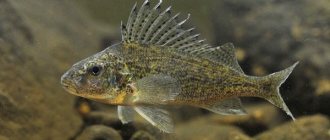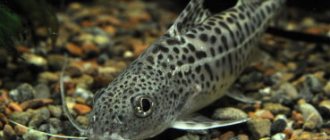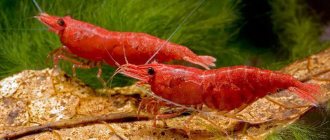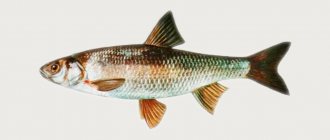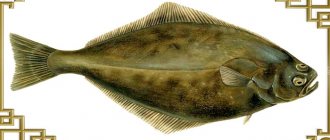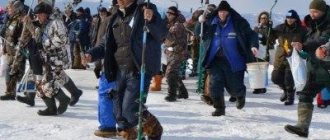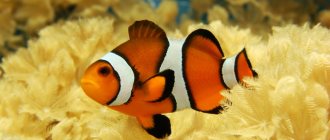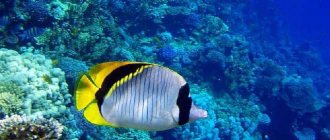Species diversity
Various marine animals are found in the reservoirs of Udmurtia, with fish being the most in demand. According to scientific evidence based on many studies, about 39 species of fish live in the region today. They inhabit:
- Lakes.
- Rivers.
- Ponds.
- Reservoirs.
Some private fish farms breed rare or cultivated species, such as carp, which is a domesticated variety of carp.
As for the number of representatives of the sturgeon family, over the past decades it has decreased significantly . This is explained by pollution of water bodies with wastewater. In addition, poaching and illegal fishing of rare fish are rampant in the area. For this reason, sturgeon are no longer considered an object of commercial and recreational fishing, being under the protection of the fisheries inspectorate.
One of the most common fish in Udmurt rivers and lakes is pike. Due to its large population, it is considered an indispensable part of commercial and recreational fishing. The toothy predator living in this area has an impressive size and is capable of demonstrating high growth rates and early maturation. Over four years of life, an individual gains about one kilogram of weight, and most often fishermen come across 2-5-year-old individuals. It is less common to obtain trophy prey at the age of 12–15 years. The weight of the latter can reach 20 kilograms.
Puberty of males ends at 3-4 years of age, when they begin to participate in spawning. As for females, their maturation ends at the age of four to five years. During the first spawning, females are able to lay about 5-10 thousand eggs. Large representatives of the species lay more than 250 thousand pieces. Depending on weather conditions, the spawning period can begin in late April or early May, provided that the water temperature reaches 4 degrees Celsius near the coastal waters.
The main part of the pike's diet is occupied by perch and roach, less often by small pike and ruff. Local authorities make a lot of efforts to prevent illegal fishing in the spring, when the fish go to spawn. Measures are being intensified to combat poaching of spawning pike.
FISHING IN UDMURTIA
Of the vertebrate animals, typically aquatic animals include representatives of the class of cyclostomes and fish . Of the cyclostomes (animals close to fish), in some tributaries of the Kama, the brook lamprey is found , which does not have any practical significance.
Undoubtedly, of all aquatic animals, fish are the most interesting. Based on our observations and literature data, we can assume that at least 39 species of fish (from 10 families) live in the reservoirs of Udmurtia. Some species of fish are very numerous and widespread in various types of water bodies: rivers, lakes, reservoirs and ponds; others, on the contrary, are more or less rare and few in number.
In some ponds, in addition to the listed fish species, a cultivated variety of carp, carp, .
The number of sturgeon, salmon and grayling has greatly decreased over the past 20-25 years due to significant pollution of the Kama and some other reservoirs with industrial wastewater. Representatives of these families have lost their importance as objects of commercial and recreational fishing; there is no reason to hope for a significant increase in their numbers in the future.
Pike is the most widespread fish in water bodies of Udmurtia, an important object of both commercial and recreational fishing. Pike is characterized by a high growth rate and early puberty. In our reservoirs, pike usually reaches a weight of 1 kg in the fourth year of life. Most of the catches contain 2-5 year old fish; occasionally much larger and older specimens, 12-14 years old and weighing up to 20 kg, are caught. However, the opinion about the longevity of pikes is unfounded, although in popular literature one can find statements about the capture of almost 300-year-old pikes.
Male pike first participate in spawning (spawning) in the third or fourth year of life, females - in the fourth or fifth. For the first time, spawning females lay 5-10 thousand eggs, the largest ones - more than 250 thousand. Spawning is usually observed in late April - early May, when the water off the coast warms up to 4°.
In our reservoirs, pike, feeding almost exclusively on low-value fish species (mainly perch and roach, and to a lesser extent, smaller pike and ruff) is an unconditionally useful fish. Measures are desirable to prevent the mass catch of pike during its reproduction. The fight against the shooting of spawning pike, which is accompanied by the maiming of a large number of fish, which subsequently die needlessly, must be intensified.
The carp family is represented in our reservoirs by 22 species; We will provide brief information about the biology of only some of the most common fish.
Roach (roach) is the most numerous and common in a wide variety of water bodies. Despite its low commercial value, it is one of the main fishing objects. In the years preceding the cessation of fishing in the Izhevsky and Votkinsk ponds, along with perch, roach made up the bulk of the catch. Roach is classified as a “weed” fish due to its small size and slow growth. She lives up to 12-14 years, reaching 100 g at 7-8 years of age. The bulk of the catches are 5-6 year old individuals measuring 15-18 cm and weighing 40-70 g.
Most males become sexually mature at the age of 3 years, females - a year later. For the first time, spawning females lay 3-4 thousand eggs; the oldest ones have more than 100 thousand eggs. Eggs are laid on the plant substrate at the end of the first ten days of May when the water warms up to 9-10°C; spawning is quite friendly, although its duration varies in different years depending on the weather.
In large ponds (Izhevsk, Votkinsk), the main place in the roach’s food composition is occupied by algae (over 50% by weight) and the remains of higher plants (up to 20%). Among animals, it eats small mollusks, planktonic crustaceans, in small quantities - larvae of caddis flies and chironomids (bell-bellied mosquitoes), and in some cases - fish eggs.
In relation to roach, any catch restrictions are unnecessary due to the fact that, having early sexual maturity, relatively high fertility and a wide range of nutrition, roach easily maintains the population of the herd at a high level.
Bream is the most valuable species in the fish population of our reservoirs. Bream grows quite well and reaches 500-600 g at the age of 6-7 years. Bream is distinguished by a relatively late period of puberty: males first participate in spawning in the seventh or eighth year of life, females in the ninth or tenth year. Females lay from 60 to 200 thousand eggs on a plant substrate. Spawning of bream in our reservoirs is one-time, usually friendly, and begins in late May - early June, at a water temperature of at least 17°. When it gets colder, the spawning period extends. Late spawning is unfavorable for the development of juveniles, which by this time have a large number of enemies.
As a rule, the food composition of bream is dominated by bottom organisms: larvae of chironomids, caddis flies, mollusks, and, less commonly, mayfly larvae. In some reservoirs, planktonic crustaceans occupy a significant place in the diet of bream, which indicates a lack of basic food items.
The increase in the number of bream is restrained by perch, roach, and ruff, which, due to their abundance, not only compete with it for food, but also destroy a significant amount of its eggs and juveniles. Only by suppressing the numbers of these species can we expect an increase in the numbers of bream.
When using reservoirs for fisheries, the fishing measure established for bream must be strictly adhered to - 30 cm (the size is taken from the end of the snout to the base of the middle rays of the caudal fin). It should be noted that amateur fishermen catch mainly young, immature bream, since females spawning for the first time have weight up to 900-1000 g, and fish of this weight are quite rare in amateur catches. In this regard, in relation to the so-called “bream,” it would be very useful for the public and fisheries protection authorities to apply the fishing rule, which provides for a catch limit of up to 5 kg per day.
Ide is also a very valuable commercially valuable inhabitant of our water bodies. It has almost the same growth rate as bream, and even slightly outpaces the latter. The ide becomes sexually mature a year earlier than the bream: males at 5-6 years, females at 7-8 years. Fertility - 40-180 thousand eggs, single and early spawning. The ide lays eggs a little later than the pike at a water temperature of at least 5°.
Mollusks and thicket inhabitants play an important role in the nutrition of ide: mainly dragonfly larvae. Plant foods are also used in quite significant quantities.
The larvae of caddisflies and chironomids are of secondary importance in the diet of ide.
Dace is found mainly in small, clean and fast-flowing rivers. It has no commercial significance. Sexual maturity occurs in males at the age of 2-3, in females at 3-4 years. Spawning occurs in early May at a water temperature of 6-7°. Eggs are deposited on sandy-clayey soils, sometimes on flooded grass. Fertility - up to 15-20 thousand eggs. The dace feeds mainly on animal food - zooplankton, aerial insects, caddis fly larvae, and eats fish eggs. It also partly uses plant foods - algae and soft underwater vegetation.
The dace reaches 30 cm and weighs 400-500 g; its usual size is 20-25 cm and weighs 80-150 g.
The chub is found in the same places as the dace. Reaches 75 cm and weighs 4 kg; usually up to 1 kg. Males mature at the age of 3, females at 4 years. Caviar is laid in portions in several stages from the first days of May to the end of June on sandy and rocky soils. Fecundity is usually in the range of 100-200 thousand eggs.
The adult chub feeds mainly on worms, insect larvae, aerial insects, tadpoles and small frogs. Eats eggs and young fish.
Like dace, chub is of significant interest as an object of sport fishing.
Asp is also predominantly a river fish, although it is not rare in large lakes. The average size in commercial catches is 35-40 cm with a weight of 700-750 g. It matures at the age of 3-5 years. Spawning is friendly in the first half of May at a water temperature of 9-10°, fertility is usually about 40-100 thousand eggs. Eggs are deposited more often on rocky soil and fast currents, and somewhat less often on hollows. Juvenile asps feed mainly on plankton—cladocerans and copepods. At the age of one year, the asp switches exclusively to feeding on fish fry. Adults feed only on small fish. It is interesting to note that, like all cyprinids, the asp has pharyngeal teeth and therefore does not swallow its prey whole, as pike and other predatory fish do, but first crushes it.
When studying the contents of the digestive tract, it is impossible to essentially determine which fish was the victim of a predator.
The rudd lives in lakes, oxbow lakes and backwaters, overgrown with higher aquatic vegetation, and avoids fast currents and deep places. The largest dimensions are up to 35 cm with a weight of 1.5-2.0 kg. Reaches sexual maturity at 3-4 years of age. Spawning is portioned, the first portion is deposited when the water warms up to 18° in the last ten days of May. The last batch of eggs is laid at the end of June. On average, fertility is 100-120 thousand eggs.
Eggs are deposited on aquatic plants.
The diet of the rudd is dominated by plant foods: algae, soft aquatic vegetation. Animal food includes cladocerans, amphipods, aquatic burros, larvae of chironomids and other insects, as well as fish eggs and fry.
Podust prefers fast-flowing rivers and leads a gregarious, bottom-dwelling lifestyle. Maximum weight up to 1 kg; in mass - 20-25 cm with a weight of 200-300 g. It spawns for the first time at 3-4 years of life. Females lay from 2 to 10 thousand eggs in shallow places with rocky soil in early May at a water temperature of 6°.
Podust feeds mainly on algae; often significant amounts of silt and detritus are found in the intestines. In small quantities, the podust eats rotifers, lower crustaceans, insect larvae, and occasionally the eggs of other fish.
Tench and golden carp are predominantly lake fish; in rivers they are found in creeks, backwaters, and oxbow lakes. They prefer silted and heavily overgrown reservoirs. In reservoirs with a diverse fish population, tench and golden crucian carp are usually few in number. This is largely explained by the late periods of reproduction of these species, coinciding with the time of mass development of various enemies of eggs and juveniles. Tench and golden carp lay eggs in three portions from the second ten days of June to mid-July, with intervals of 12-14 days between laying individual portions. Both species become sexually mature at the age of 3-4 years. The fecundity of tench averages 200-300 thousand; in large females it can reach 800-900 thousand eggs; for golden crucian carp - up to 200 thousand.
In terms of their feeding patterns, tench and crucian carp compete with bream and ide: the food composition is dominated by mollusks (for crucian carp - somewhat less frequently), chironomid larvae and planktonic crustaceans.
In terms of fishing, tench and golden crucian carp can be of some importance only in reservoirs in which, in terms of species, fish are mainly represented by them; in this case they form large herds. At the same time, however, there is a strong decline in the growth rate.
Gustera is a lake-river fish, similar in appearance to bream, but different from
the latter with a slower growth rate and smaller size. Its maximum dimensions are up to 35 cm with a weight of just over 1 kg; usually in mass - up to 100-200 g. Spawning is portioned and lasts about a month. Spawning begins at a water temperature of at least 16-17°.
Fertility Up to 100 thousand eggs (on average about 50 thousand). Males first participate in spawning in the third year, females - in the fourth year of life. The silver bream feeds mainly on bottom organisms - chironomid larvae and mollusks and in this regard acts as a serious competitor to bream. Due to the low commercial value of silver breams, with rational management of fisheries, they try to take measures to reduce their numbers.
Bluefish are systematically close to bream, but differ in significantly lower body height. In addition, bluefish are small fish; their weight rarely reaches 500 g, but on average 100-150 g. Sexual maturity occurs at 3 years. Spawns from the first days of May in fields and bays. Eggs are deposited on vegetation. Although the bluefish is a secondary commercial fish, it is nevertheless of some interest to fisheries due to its feeding characteristics. The bluefish feeds mainly on zooplankton, which is not fully utilized by other fish.
Bleak , like bluefish, is one of the few planktivorous fish. Despite its small size,
bleak has a high fat content and good taste. In some reservoirs, bleak forms large herds and can serve as an object of special fishing. Bleak has some significance as a food item for more valuable species of predatory fish: pike, pike perch, burbot.
Chekhon , unlike bleak, which is found in reservoirs of various types, is found only in more or less large rivers. Its usual dimensions are 20-25 cm, weight - 80-150 g.
The sabrefish spawns in early May, mainly on fields, and lays eggs on
vegetation in small places. It feeds mainly on insect larvae, amphipods, and, starting from the third year, on juvenile fish.
In addition to the considered representatives of the carp family, among the commercial fish in the waters of the republic there are also white-eye, silver crucian carp and carp, but these species are not numerous.
The remaining species of carp (minnow, verkhovka, bitterling, minnow, lake minnow) are very small fish that can be considered “trash” and are not of commercial interest. This applies equally to representatives of the loach family (loach, spined loach, loach) and sculpins (sculpin).
Catfish are found in the Kama and its large tributaries. It usually lives in holes, singly; in winter it forms accumulations in pits. There is evidence in the literature that the largest catfish can reach a length of 5 m and a weight of over 300 kg, while its usual size in commercial catches is 50-100 cm and weight is from 1.5 to 7 kg.
Catfish live for over 30 years, sexual maturity occurs at 3-4 years of age. The amount of fertility depends on size and age; in the largest individuals it exceeds 0.5 million eggs. Spawning is portioned and begins at a water temperature of 18°.
Juvenile catfish feed on aquatic insects and their larvae, as well as the fry of various fish. Adult catfish feed mainly on fish and frogs, and on occasion, waterfowl. In the reservoirs of Udmurtia, catfish were caught in extremely small quantities.
Burbot is the only representative of the cod fish family that lives in fresh waters. This is a cold-loving fish that reproduces and fattens during the cold season. In summer, warming up the water greatly inhibits the life processes of burbot to a state close to torpor. At this time, burbot hides under snags, driftwood, and stones, choosing places near bottom springs and springs carrying cold water.
Burbot can reach a length of up to 1 m and a weight of over 20 kg, but usually its weight in catches is from 0.2 to 2 kg. Palim becomes sexually mature at the age of 3-4 years, fertility strongly depends on size and ranges from 40-50 thousand to 3 million eggs for the largest individuals. Spawning is long-lasting and occurs in winter in January - February, at a water temperature close to 0°. Spawning grounds are located at depths of 1-3 m on rocky, pebble or clayey soil.
Juveniles and small burbots feed on bottom invertebrates: chironomid larvae, dragonflies, worms, and various crustaceans. Adult burbot is usually a predator, feeding on a variety of fish. Burbot feeds mainly at night.
The perch family in the reservoirs of the republic is represented by pike perch, bersh, perch and ruff.
Pike perch is a valuable commercial fish, gradually disappearing due to pollution of water bodies; this species lived in the Kama, its large tributaries and lakes with good oxygen conditions. Pike perch reaches a length of more than 1 m and a weight of over 16 kg. In commercial catches it was mainly represented by individuals from 0.3 to 1.5 kg. For the first time, pike perch spawns at 4-5 years of age.
The fertility of large pike perch is over 1 million eggs, usually 100-200 thousand. Spawning in May on hollows, eggs are deposited in the root parts of plants at a depth of 50-100 cm. Pike perch fry feed on small crustaceans and chironomid larvae, but very early (with a size of 4-5 cm), the pike perch switches to predatory feeding. In our conditions, it feeds mainly on small, low-value fish species: bleak, roach and ruff.
Bersch is the closest relative of the pike perch, but is much less common. In terms of lifestyle it is very close to pike perch, but differs from the latter in its slower growth rate and significantly smaller size.
Perch is as common and numerous in various reservoirs as the cyprinid roach. The bulk of the perch grows slowly, reaching a weight of 100 g at 6-7 years of life. In large lakes and ponds, part of the perch herd, which has a well-defined predatory diet and lives in deep, open areas, is characterized by a higher growth rate and larger size. Male perch become sexually mature at 2 years, females at
aged 3 years. Spawning begins at a water temperature of 5-6°, is usually somewhat extended in time and continues at much higher temperatures, ending, however, as a rule, during the first ten days of May. Eggs are deposited on vegetation. For the first time, maturing females lay 4-5 thousand eggs, the bulk - 10-18 thousand, the largest - up to 150 thousand.
The diet of small perch, which stays off the coast, in lakes and ponds in areas overgrown with aquatic vegetation, is dominated by thicket forms: dragonfly larvae, amphipods, leeches; chironomid larvae and large caddisfly larvae and fish fry are eaten to a lesser extent.
Large perches are distinguished by their predatory diet, eating mainly smaller perch and roach, less often - ruff, bleak and juvenile ide; Small frogs are also common in their diet, especially in autumn. In large quantities, perch destroys the eggs of various fish, in particular the eggs of bream, which negatively affects the number of the latter and gives grounds to consider perch a very harmful fish for some reservoirs.
The high reproduction rate of perch makes any restrictions on its catch unnecessary; on the contrary, intensive catching of perch is a means of biological reclamation and has a beneficial effect on the number of valuable commercial species. Perch appears to be capable, to a certain extent, of displacing other fish, even those with such high vitality as roach. This is evidenced by a steady increase in perch catches and a decrease in roach catches in the Izhevsk and Votkinsk ponds.
The ruffe is a widespread and numerous species from the perch family. Its usual length is up to 15 cm and its weight is up to 50 g. It is characterized by early sexual maturity: males mature at the age of one year, females at 2 years. Spawning is portioned and continues throughout May and early June at different water temperatures. The fertility of females measuring 8-10 cm is 4-6 thousand eggs; in larger ruffes, fertility of over 100 thousand eggs was noted.
Ruffe fry feed on small benthic crustaceans; Later, the ruffe eats chironomid larvae, small mollusks, amphipods, as well as eggs and fry of other fish.
The ruff competes in nutrition with more valuable fish, especially bream. If we add to this the destruction of fish eggs by the ruffe, then its negative impact on the fish population of water bodies becomes obvious. At the same time, the ruffe is of some importance as food for predatory fish and as an object of recreational fishing.
Numerous lakes, ponds and small reservoirs of Udmurtia are for the most part suitable for fish farming, the main object of which in small areas and well-fished or drainage reservoirs should be
carp is a cultivated variety of carp.
Fish farming in a reservoir must be preceded by the catching of weed and predatory fish. Carp farming should be carried out over one summer: planting in the spring and complete catching in the fall.
The introduction of carp or carp into large ponds, such as Izhevsky, Votkinsk, Kambarsky and Pudemsky, can be successful only under the condition of intensive fishing of weed fish and stocking with larger yearlings in large quantities (several hundred thousand pieces).
of Ural ripus and peled
is more promising for large ponds in Udmurtia . The most important means of preserving and enriching the fish population of our water bodies is the organization of rational fishing in combination with reclamation and fish farming measures.
To preserve fish stocks, it is necessary to pay constant attention to the fight against pollution of water bodies by wastewater from industrial enterprises. On rafting rivers of fishery importance, clogging of water bodies with waste should be prevented
logging and timber. It is forbidden to wet flax, hemp, bast, or leather in fishery reservoirs.
In the reservoirs of Udmurtia, there is no fight against winter fish kills, against the overgrowing of reservoirs with hard aquatic vegetation, and insufficient attention is not paid to saving juvenile commercial species and maintaining coastal areas in proper sanitary condition.
The fight against poaching should also be strengthened. Fishery protection authorities are not able to cope with this task on their own - help must come from the general public, from those who value the riches of our nature.
Where to fish in Udmurtia
Carp family
The carp family is considered the most extensive, because about 22 species of fish from this group are found in the reservoirs of Udmurtia. The most numerous is the roach, which can be found in almost every freshwater body. And although the commercial value of sorog is low, it is considered an important element of fishing. During the period when fishing in the Izhevsky and Votkinsk ponds began to cease, this fish occupied the bulk of the catch.
Many classify it as a “weed” representative of the ichthyofauna, which is associated with its small size and slow growth. The lifespan of a sorog reaches 12−14 years, while the fish gains 100 grams of weight only at the age of 7−8 years. In most cases, small palm-sized specimens are caught on the hook. They weigh about 40−70 grams and have a 15−18 cm body.
Puberty in males ends at the age of three years, in females - at the age of four years. During the first spawning, the female lays 3-4 thousand eggs, and older representatives of the species - over 100 thousand eggs, which accumulate on aquatic vegetation. Under favorable weather conditions and water warming up to 9-10 degrees, spawning begins at the end of the first ten days of May. It is not difficult to notice its beginning, because the fish becomes very noisy and active.
Inhabitants of large bodies of water, for example, Izhevsk and Votkinsk ponds, feed on all kinds of algae, which occupy more than 50 percent of the diet, as well as the remains of higher plants (their share is 20 percent). They also eat food of animal origin:
- All kinds of small shellfish.
- Planktonic crustaceans.
- Larvae of caddisflies and chironomids.
In some cases, roaches even consume fish eggs. Due to the rapid reproduction and unpretentious nature, the number of representatives of the species is constantly growing. Therefore, there are practically no special restrictions on catch.
Description and lifestyle of bream
Another popular inhabitant of the reservoirs of Udmurtia is bream. It is considered a valuable aquatic inhabitant with good growth productivity and excellent taste. At the age of six to seven, representatives of the species weigh about 500−600 g. Puberty of males ends relatively late - at 7−8 years. In females - at the age of 9-10 years.
During spawning, one adult female brings from 60 to 200 thousand eggs, laying them on a substrate of plant origin. Depending on the weather, spawning can begin in late May or early June, provided that the water warms up to a temperature of 17 degrees Celsius. If warm days give way to cold, windy and rainy days, the spawn may be delayed. At the same time, laying eggs too late reduces the survival rate of the young, because the fry simply will not have time to fully form and will become promising prey for predators.
The main part of the bream's diet is plankton and all kinds of bottom creatures. Among them:
- Larvae of chironomids and caddisflies.
- Shellfish.
- Mayfly larvae.
Sometimes bream feeds exclusively on planktonic crustaceans, but this situation is typical of small reservoirs with a poor food supply.
The population size is at an average level and is practically not growing. This is explained by the activity of predatory fish, including perch, roach and ruffe, which are represented in large numbers in the reservoirs of Udmurtia. These species not only compete with bream in terms of food, but also eat large quantities of its eggs and young fish. To increase the bream population, it is necessary to suppress the increase in the number of predators.
Map of fishing spots
Zuevy springs, which are the floods of the large Kama River, very often delight fishermen. There are a large number of different fish in this reservoir. The majority of fishermen who come to the pond love to catch predatory fish. Pike, perch, pike perch and burbot are often found here. Bersh are also often caught here. In addition, lovers of peaceful fishing here catch rudd, roach and bream using a feeder or float.
The small river Sepych, located near the settlement of the same name, in this river there are a lot of salmon and perch, which are caught both in winter and in summer. Adherents of ice fishing often go on boats in search of fishing luck, but don’t forget about safety precautions. Also, if you are going to fish for perch, then it is worth installing a cable; pike are caught extremely rarely, but sometimes fishermen bite off their favorite gear.
Not far from Izhevsk there is Izhevsky Pond, on the banks and in the waters of which you can see a large number of fishermen at any time of the year - both winter and summer. The fact is that lovers of fishing for peaceful fish come in search of bream and bream, as well as bream, of which there are a large number in the reservoir. Fans of predator fishing can catch pike and perch here.
Other peaceful species
Among other valuable representatives of the Udmurt ichthyofauna is the ide. It is difficult to overestimate its commercial value, since this fish has tasty meat, fast growth rates and excellent reproduction rates. Ide becomes sexually mature at the age of 5-6 years, if we are talking about males, and at 7-8 years of age, if we are talking about females. During the spawning period, the latter lay about 40-180 thousand eggs, while spawning itself can begin much earlier than with other fish. It is known that ide begins laying eggs a little later than pike, when the water temperature rises to 5 degrees Celsius and does not fall below.
The ide uses mollusks and living creatures that live in aquatic thickets as food. We are talking about the larvae of dragonflies, chironomids, caddisflies and mayflies. Also, the fish does not refuse nutritious foods of plant origin.
An important object of the Udmurt ichthyofauna is the dace. When choosing a place of residence, this species prefers small rivers with fast currents and a rocky bottom. Due to its small size, dace is not considered a commercially valuable species. Nevertheless, fans of sport and amateur fishing consider it a coveted trophy.
The period of sexual maturity of males ends at two to three years of age. Females “mature” upon reaching four years of age, beginning to lay 15-20 thousand eggs on flooded vegetation. When choosing a source of food, this inhabitant of the depths gives preference to food of animal origin. This can be any zooplankton, aerial insects, caddisfly larvae and even fish eggs. Periodically, the dace eats plant elements, such as algae and soft underwater vegetation.
It takes dace about 6 years to grow to 30 centimeters in length and gain a weight of 400-500 grams. In most cases, individuals weighing 20-25 centimeters and weighing no more than 150 grams are caught on hooks.
Nizhnekamsk reservoir
Among Udmurt anglers, the Nizhnekamsk reservoir, formed on the Kama River, is very popular. Fishing on this reservoir will be effective only if the fisherman knows the most promising areas.
"Catfish Kurya"
The place, which is called “Somavya Kurya”, is one of the many bays of the Belaya River. It is connected to lakes Somovye and Bolshiye Malyashi. Its distant part is characterized by shallow depths and an abundance of aquatic vegetation. In the water area, which is closer to the river bed, there are several islands. In winter you can catch here:
- perch;
- roach;
- pike;
- pike perch;
- bersha;
- burbot.
On a note! The ice fishing for small perch can be good in the far part of the bay. Here he consistently bites on a jig with bloodworms and a small vertical spoon. Larger representatives of this species are found in areas with depths of 2–3 m, which are located in.
In winter, roach stays close to the islands, at a depth of 3–5 m. With delicate jig tackle and high-quality bait, you can catch about 5 kg of this fish in a short daylight hours.
In winter, pike can also be found near islands, where it hunts for roach, which is its main food item. During prolonged thaws, it goes to the far part of the Somovya Kurya. It is easier to catch a predator from the ice using a jig tackle.
Pike perch and bersh are caught at the exit from the bay, closer to the main channel of the Kama, where the depths are 7–10 m. These species of predators respond well to balance beams and small ratlins.
The ice on the Kama Reservoir freezes unevenly, so you should be extremely careful when moving on it in vehicles.
In winter, burbot sticks to areas with a depth of 4–6 m and stably bites on girder tackle and set-ups. A small roach or a ruff is usually used as a nozzle. The most active bite is observed at night.
During the warm season, fishing on the Somovya Kurya can be no less productive than in winter. In summer, a variety of white fish bite excellently here:
- roach;
- crucian carp;
- silver bream;
- bleak;
- ide;
- blue;
- bream.
For fishing, they usually use a float rod with a blind rig, and only in October, when the water temperature drops, do they begin to use a “match” and a feeder. The most effective baits are considered to be worms and maggots.
Throughout the summer, pike, perch and asp are caught in Somovya Kurya. Pike perch and bersh begin to bite steadily in the autumn months.
"Derbeshka"
“Derbeshka” is a huge bay, which is divided from the Kama riverbed by a ridge of large and small islands. The average depth of this area is about 3 m. This water area is distinguished by many shallow backwaters. Such characteristics create excellent living conditions for perch. The predator grows here to gigantic sizes and bites consistently throughout the year. In addition to the “striped” one, you can catch here:
- roach;
- pike;
- pike perch;
- asp.
On a note! The most active roach bite on Derbeshka is observed in the spring. At the end of April, huge schools of this fish approach the coastal zone and begin to greedily grab plant and animal baits. Zhor lasts about 2 weeks. After which the roach moves to deeper areas and it becomes more difficult to catch.
Small pike weighing up to 1 kg can always be caught in the coastal zone. In the summer, it is caught on a spinning rod, using the following baits:
- unloaded “rubber”;
- wobblers with depth up to 1 m;
- “turntables” No. 2–3;
- poppers.
More significant specimens stand in the depths of the bay and do not show much activity during the summer. They begin to bite in the fall, when the water temperature approaches 13 degrees. At this time, the predator responds well to large wobblers, jerkbaits and spinnerbaits. Vibrating tails 20–25 cm long also show high efficiency. At the end of November, when sufficiently strong ice is established, the “toothy” fish are well caught on girders.
In the local pits “Derbeshki” you can count on a bite from medium-sized pike perch. This predator hunts in the bay until September, and then moves closer to the main channel of the Kama, where there are great depths.
On the main channel of the Kama, the current is quite strong, so silicone baits have to be equipped with heavy jig heads weighing at least 60 g.
The asp is caught at the exit from the bay. At the end of summer, in this area, he actively hunts for fry, squeezing them to the surface of the water and forming “boilers”. Its feeding places are easy to find by the concentration of terns. To catch sheresper, the following baits are most often used:
- Devons;
- jig-type spinners;
- rotating spoons;
- poppers;
- walkers;
- wobblers running at a depth of no more than 50 cm.
The asp bites well until October. In late autumn, it is occasionally caught on foam fish and vibrotails intended for pike perch and bersh.
When is the best time for crucian carp to bite?
Ust-Belsk region
On the Nizhnekamsk reservoir in the Ust-Belsk region there are many recreation centers and private fishing hotels, where you can always stay overnight and find out the latest news from the reservoir. There is a large pier for parking of watercraft.
On a note! In winter, in Ust-Belsk, delivery of anglers to the most catching points is organized. It is from here that the most popular fishing routes are laid.
Local residents, who know the adjacent water area well, prefer not to travel far from home and successfully fish near a populated area.
In the Volozhka channel, as well as nearby bays, there are excellent places for fishing both from the shore and from a boat. At the mouth of the Belaya River there are also many promising areas for fishing. In winter, the following fish bite well near Ust-Belsk:
- zander;
- burbot;
- pike;
- bersh;
- perch;
- roach;
- bream.
This section of the reservoir will be of particular interest to fans of ice fishing for bream. This representative of the carp family begins to bite here in early December. In deep bays, where there is practically no current, it can be caught using float and jig tackle. The attachment is a bunch of bloodworms.
In winter, large bream bite well in the vicinity of Ust-Belsk.
The largest trophies are found on the channel edges of the Kama, where the current is quite strong. In such conditions, it is better to catch bream using the winter version of feeder gear, which consists of several elements:
- short fishing rod with a soft tip;
- small multiplier reel;
- main monofilament line with a diameter of 0.18 mm;
- feeders weighing 30 g;
- leash about 70 cm long, 0.16 mm in diameter;
- hook number 8.
A dung worm is used as bait, which holds well on the hook and does not fly off under the pressure of the water flow. This animal component is also added to the bait mixture, but only in cut form. The average weight of bream biting on the riverbed is 700 g, the maximum is 3 kg.
On a note! Instead of using an under-ice feeder, local residents use homemade fishing rods equipped with hard spring nods. The small feeder is replaced with a stationary structure installed above the fishing point. This type of gear also shows good results, but is less suitable for visiting anglers.
In the warm season, in the vicinity of Ust-Belsk, both predatory and peaceful representatives of the ichthyofauna bite well. In summer, in this section of the Nizhnekamsk reservoir, large sabrefish are caught. This pelagic fish responds to the following spinning baits:
- small jigs weighing up to 8 g;
- turntables No. 0–1;
- floating crank wobblers;
- topwaters.
Fishing will be more effective if you have a boat. It is easier to spot sabrefish parking areas in calm weather, when the characteristic circles of feeding fish are clearly visible on the water.
On the rivers flowing into the reservoir, large ide bite well. It is usually caught using a feeder or spinning tackle. The peak of its bite occurs in the second half of spring.
In summer and autumn, catfish are found in the Ust-Belsk area. The local predator prefers natural bait and is more often tempted by live bait attached to the hook of bottom gear. The largest individuals are caught using quok.
The average weight of catfish pecking in the waters near Ust-Belsk is about 8 kg.
On the Kama, excellent fishing is possible near the village of Sidorovy Gory, located on the right bank of the river. The adjacent water area is characterized by complex bottom topography, which creates excellent conditions for the habitat of predatory and peaceful fish.
This is interesting: Izbalyk: fishing and what kind of fish is found
Rudd and asp
As for the rudd, like the roach, this fish is found everywhere in the reservoirs of Udmurtia. Most often it is caught in lakes, oxbow rivers and clean backwaters with an abundance of vegetation. The length can reach 35 centimeters, and the weight is 1.5-2.0 kg. Puberty ends at the age of 3-4 years. As for spawning, it occurs in fish at the moment when the water warms up to a temperature of 18 degrees Celsius. As a rule, this happens in the last days of May. Moreover, in cold conditions, rudd spawns even in the middle or end of June.
If we talk about representatives of the river ichthyofauna, then you can find large asp there. By the way, it is occasionally caught in large lakes. According to local fishermen, the average size of commercial fish does not exceed 35-40 centimeters. Moreover, the fish weighs no more than 700-750 grams.
Maturation ends at 3-5 years of age, and the spawning season falls in the first ten days of the last spring month. Fertility indicators can reach 40-100 thousand eggs per clutch.
Most often, females spawn in places with a pronounced rocky bottom and fast current. Occasionally they prefer a sandy, flat bottom.
Juveniles eat cladocerans and copepods. Upon reaching one year of age, the asp turns from a peaceful inhabitant of the depths into a predator that attacks the fry. Adults prefer only fish.
It should be noted that the asp, like other representatives of the carp family, has pharyngeal teeth. Therefore, before eating food, it first crushes it, and does not swallow it, as pike does. When opening the belly after catching, it is problematic to determine what kind of fish ended up in the asp’s stomach.
Izhevsky Pond
On the territory of the Republic of Udmurtia you can have good fishing in Izhevsk. The pond located in the city is a large body of water with a total area of 24 km². Its length is 12.5 km, width is 2.5 km. Average depths do not exceed 4 m, but there are local pits up to 12 m.
The pond was formed on the Izh River in 1760. Initially, it was intended to supply water to Izhevsk and nearby settlements. Today it continues to perform its main functions, but at the same time it is one of the favorite vacation spots of the local anglers. It is inhabited by:
- perch;
- pike;
- roach;
- bream;
- bleak;
- ruff.
Perch can be caught well in open water in the Izhevsk pond. Most anglers use light spinning tackle to catch it. The coastal part of the reservoir is shallow, so only small predators weighing up to 150 g hunt here. Large “humpback whales” stand at a depth of 3–4 m and can only be reached by boat. From the ice, local perch consistently bite on a jig with a bloodworm and a small balancer.
On a note! Izhevsky pond is rich in pike. The bulk of the predator stands in the area where the coastal shallow water ends and the descent into depth begins. In summer and autumn it is caught using wobblers and oscillating spoons, which are held along the very edge of the edge. In winter, in these same places, the “toothy” bites on the girders.
There are quite a lot of roaches in the pond. In the spring, it is caught near the shore with a float rod. In summer it moves to deeper areas where it can be caught on a feeder.
Bream on the pond begins to bite in the first half of June. When fishing for this fish from the shore, use feeder or match gear. When fishing from a boat, you can get by with a classic fishing rod with a blind rig. Used as bait:
- worm;
- maggot;
- bloodworm;
- semolina dough;
- crumb of Borodino bread.
In winter, bream can be found in local holes about 10 m deep. The peak of the bite occurs in December. At the end of January and February, this representative of the carp family behaves extremely passively and is caught only during long thaws.
Perch in the Izhevsky Pond is excellently caught using small shad-type wobblers of natural colors.
The Izhevsky Pond is also home to bleak and ruff, which, due to their small size, are not of particular interest to the angler. Those fishermen who go to suburban areas of the reservoir, where large trophies are caught much more often, find themselves in an advantageous position.
